The wood blewit (Lepista nuda) is an edible mushroom from the Clitocybe genus, Tricholomataceae family. It is widespread in North America and Europe. It's also called the blue stalk mushroom in English, in France they call it pied bleu, and in Germany it goes by the name violette rötelritterling.
The wood blewit is a mushroom one would be hard-pressed not to notice. It grabs the eye with its violet, fleshy cap, which is initially bell-shaped but eventually flattens out. Its diameter reaches 6″ (15 cm). The stem of the mushroom is also distinctively colored.
It can be either violet or blueish, with the color fading in the upper parts. It has a cylindrical shape and is no more than 4″ (10 cm) tall. The gills of the wood blewit are also violet, easily separable from the fleshy part. The spores are pinkish. The flesh of Lepista nuda possesses a violet shade. It is soft and thick, characterized by a pleasant, unobtrusive smell.
Collecting Wood Blewit
It's true that wood blewit has a whole lot of discernible characteristics but it is not the only forest mushroom to be colored in this fashion. If you intend to go mushroom picking for Lepista nuda, you need to be absolutely sure of your knowledge or have an experienced mushroom guide with you.
The most appropriate season for picking wood blewit is fall. You'll be able to gather the largest quantities of these remarkable mushrooms in September and October. Of course, it's also possible to come upon Lepista nuda during spring and summer. In general, the species is widespread. It thrives in deciduous and coniferous forests. You may come across these mushrooms one at a time or clustered in groups, surrounded by old leaves.
When out hunting for wood blewit, you need to be careful not to confuse it for one of a number of other mushrooms. The 1st among these is the so-called field blewit (Lepista personata), which is also edible. You'll find it in meadows without any trees around it.
It differs from wood blewit in that its cap and flesh are whitish. Another potential look-alike of wood blewit is the Lepista sordida. You can rely on experienced mushroom guides to differentiate between them since they look nearly identical. Still, Lepista sordida has a thinner cap and stem and is known for its more humble size.
Lepista glaucocana is another species that can fool you. However, here we see a lighter coloration of the cap and stem in comparison to the wood blewit. As well, this species has an unpleasant smell. Wood blewit has similar characteristics to many other species, among which are Cortinarius alboviolaceus, Cortinarius camphoratus, Cortinarius caerulescens and Cortinarius hercynicus.
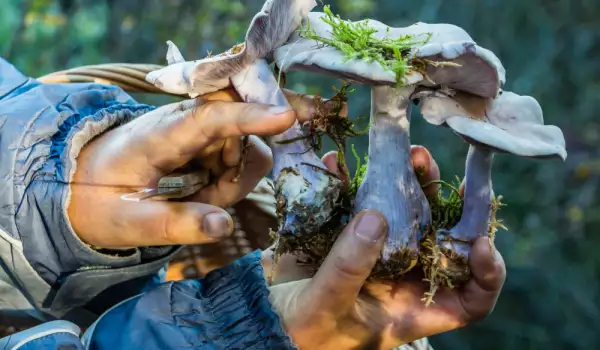
Cooking Wood Blewit
Wood blewit attracts with its typical mushroomy aroma and pleasant taste. Consumption of it is only recommended after extended heat treatment. It's suitable for use in making soups, stews, sauteed, breaded and fried dishes. It goes excellent in omelettes and meat dishes.
You can combine the mushrooms with macaroni or with a sauce, either way their taste qualities will manifest equally well. Wood blewit is conserved by sterilization. Drying this type of mushroom is not recommended. Some chefs avoid mixing Lepista nuda with other types so it doesn't lose its distinct pleasant aroma.
When cooking the mushrooms, be sure to clean and wash them well with cold water. These types of mushrooms require precooking, so it's best to put them to boil for 15 min. after cleaning them, then cook them as intended.
Let us offer you an easy-to-make recipe for wood blewit with butter.
Ingredients: 24.5 oz wood blewit, 2 onion heads, 2/5 cup butter, 1 tbsp sour cream, 1 bunch of parsley, black pepper, nutmeg, salt.
Preparation: Clean and wash the mushrooms thoroughly. Put them to boil 10-15 min. in salted water. In the meantime, chop the onions and braise them in the butter. Take the mushrooms out of the water, drain them and add them to the onions. Once the products soften enough, add the sour cream and stir. Season with the spices and remove the dish from the stove. When serving, sprinkle with finely chopped parsley.
Benefits of Wood Blewit
Eating wood blewit benefits not only our taste buds but our entire body. The mushroom is a valuable source of copper, zinc, manganese, which are important for our health and well-being of our whole body. It's also rich in thiamine and riboflavin. Wood blewit is also known for its antibacterial properties.
Dangers of Wood Blewit
As long as wood blewit is well cooked, eating it should not cause any type of ailment. However, if eaten raw, this may cause upset stomach, pain or diarrhea in the consumer.
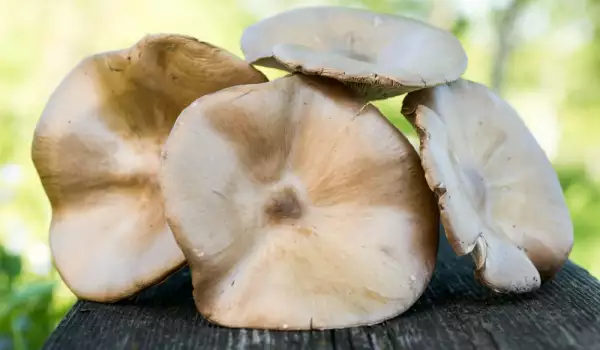
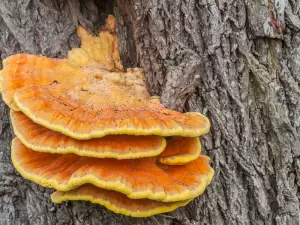
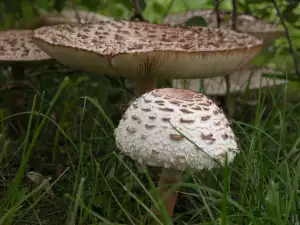
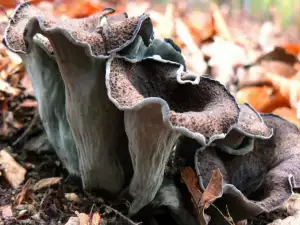
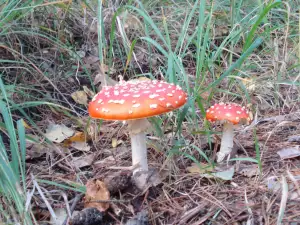
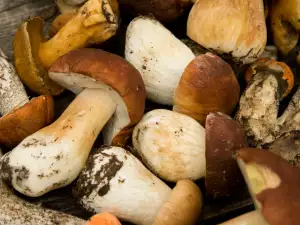
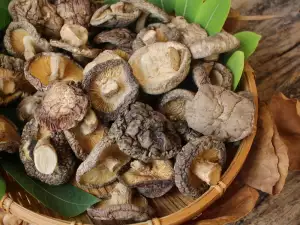

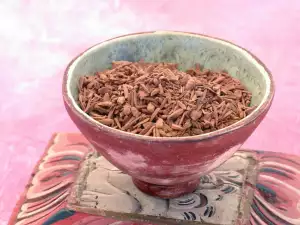
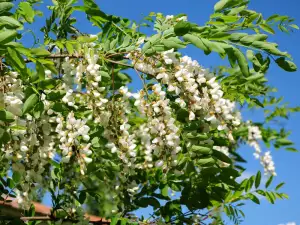
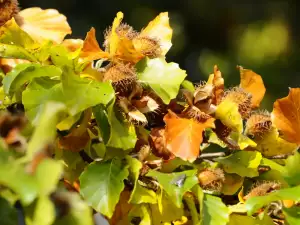



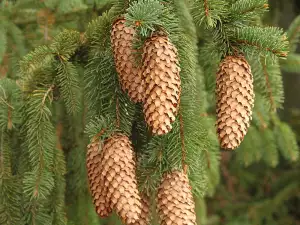

Comments